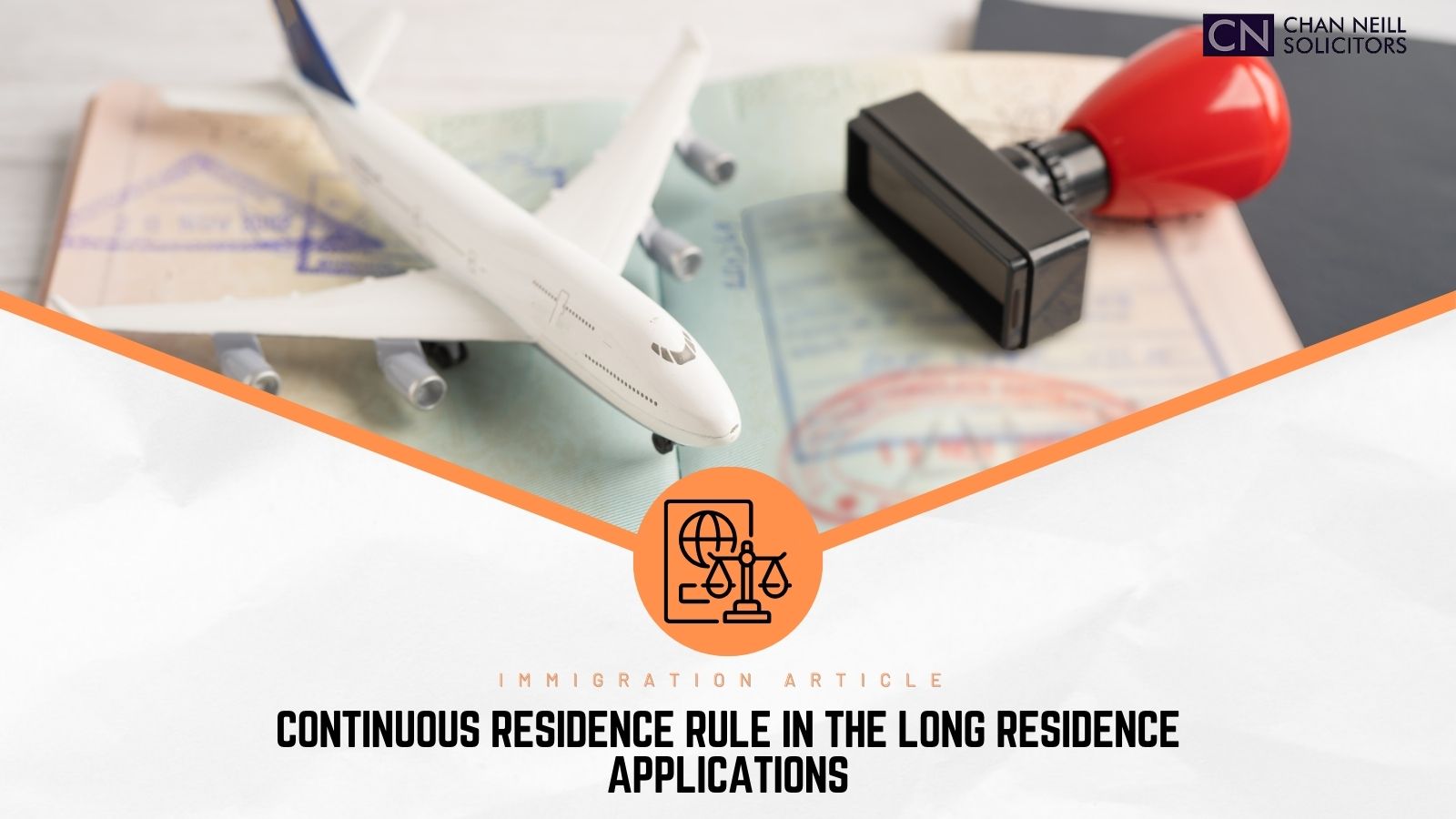Continuous residence rule in the Long Residence applications

The main requirement for the Long Residence visa category is to spend at least 10 years in the United Kingdom lawfully. The word “lawfully” is defined as having valid permission to be in the UK, such as for study, work, family purposes (but not permission as a visitor or short-term student or a seasonal worker).
The 10-year period that includes time spent in the UK unlawfully is not covered by this post. More information on this can be found in Appendix Private Life.
Appendix Long Residence
The Statement of Changes (“SoC”) in Immigration Rules laid before Parliament on the 14th of March 2024 (HC 590) introduced big changes to the Long Residence route. As such, a new requirement was brought in for applicants to have had their current permission for at least one year before attempting a settlement application under the Long Residence route. In addition, it altered the way of meeting the “Continuous residence” requirement by introducing new absences calculation technique “for greater consistency across immigration rules” [quoted from the Explanatory Memorandum to the SoC (HC 590)]. Although consistency is a value of paramount importance, it remains questionable whether the primary legislation needed consistency in this particular instance.
The newest edition of the Immigration Rules for Long Residence visa route can be found in a recently introduced Appendix Long Residence, which replaced the provisions in Part 7 of Rules. It includes requirements for Permission to stay, Settlement as well as the Transitional arrangements for those, granted an extension of stay on the basis of Long Residence on or before 8 July 2012. The main difference between Permission to stay and Settlement routes is that in the latter, the English Language and Life in the UK test requirements must be met.
Historical background to “Continuous residence” requirement
The Immigration Rules for the Long Residence visa route were first laid before the House of Commons on 31 March 2003 (Statement of Changes HC 538). From there on, and until the 11th of April 2024, ‘Continuous residence’ in the Immigration Rules was defined as:
“residence in the United Kingdom for an unbroken period, and for these purposes a period shall not be considered to have been broken where an applicant is absent from the United Kingdom for a period of 6 months or less at any one time, provided that the applicant in question has existing limited leave to enter or remain upon their departure and return, but shall be considered to have been broken if the applicant:
….
(v) has spent a total of more than 18 months absent from the United Kingdom during the period in question.”
In one of our past articles, we wrote about the Immigration Rules being interpreted differently by the Home Office and the applicants themselves, resulting in refusals and subsequent litigations. The article was focused on the correct interpretation of “existing leave to enter or remain upon their departure and return” within the definition of ‘Continuous residence’, setting out the case law that impelled changes in the Home Office’s decision-making practices. Some years later, the definition of “18 months” was challenged.
Historically, “18 months” was defined by the Home Office as being 540 days. The case [2021] UKUT 65 (IAC) challenged this approach and brought the change to the interpretation of 18 months being 548 days.
Notably, the wording of the relevant paragraph of the Immigration Rules remained unchanged. However, the Home Office’s approach to applying the “Continuous residence” definition in the casework practices was revised.
With the new SoC (HC 590), the Home Office decided that there was time to change the primary legislation, that hadn’t been amended since 2003, and to do so in respect of the absences calculation under the “Continuous residence” requirement. With the new Rules, the 548 days became law rather than a guidance. However, the new absences calculation technique has caused much confusion as the correct approach depends on when the 10-year qualifying residence is completed. The Home Office is known for introducing the requirements that are bafflingly complex and the new Rules under Appendix Long Residence have not been an exemption.
New absences calculation
As of the 11th of April 2024, to meet the “Continuous residence” requirement, the time spent outside of the UK should be calculated as follows:
| 10-year period completed before 11 April 2024 | No more than 548 days during the 10-year qualifying period
No more than 184 days at any one time
|
| 10-year period completed on/after 11 April 2024 | No more than 184 days for any single absence started before 11 April 2024
No more than 180 days in any 12-calendar month period |
Essentially, the Home Office has given the prospective applicants more flexibility in terms of how much time they can spend outside of the UK during the decade in question. However, the concern now arises from the discrepancy in the wording of the Immigration Rules and the Home Office operational guidance in relation to the absences calculation. Such discrepancy is a potential pathway for litigations that, as history serves, may well alter the Home Office’s decision-making practices in the future.
Note: This article was prepared on the 25th of April 2024 in line with the version of the Immigration Rules and relevant Home Office operational guidance in place on this date.
